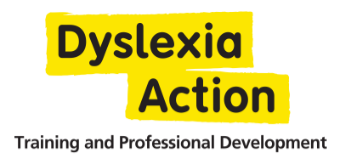

 Site Navigation
Site Navigation

Reading starts with listening! That’s how we learn the sounds of the words we need to learn to read. Dyslexic readers often need more help with linking the text to sound. Even when they can read the words, it is often more slowly and with more effort.
Being able to listen to texts, makes it possible for someone with dyslexia to access as much text and as quickly as someone without any reading difficulties. There are two ways you can read with your ears.
Books narrated by a real person, often an actor. Most important novels and children’s books are available as audiobooks.
Audiobooks used to be sold on tape or CD and be very expensive. Now, they can be downloaded from many online sources at very reasonable costs.Research has shown that people who listen to audiobooks improve their reading and also develop more positive attitudes to books.
You can read more about audiobooks in one of our Tech Thursdays.
In addition to audiobooks, you can also listen to podcasts. Find out how to use podcasts in this Tech Thursday.
All modern computers come with a synthetic voice that can read out any text on the screen using the right software. These voices are of much better quality than they used to be and more voices can be installed on the computer for free or very little cost (like fonts).
All tablets and smartphones can also read out text and they come with very high quality voices.
Unlike audiobooks, text-to-speech can be used to read out any text:
Using text-to-speech has other advantages:
Research has shown that using text-to-speech improves reading and writing skills and leads to improved results on exams for pupils with dyslexia and similar difficulties.
You can read more about making your computer speak in our 5-part Tech Thursday series.